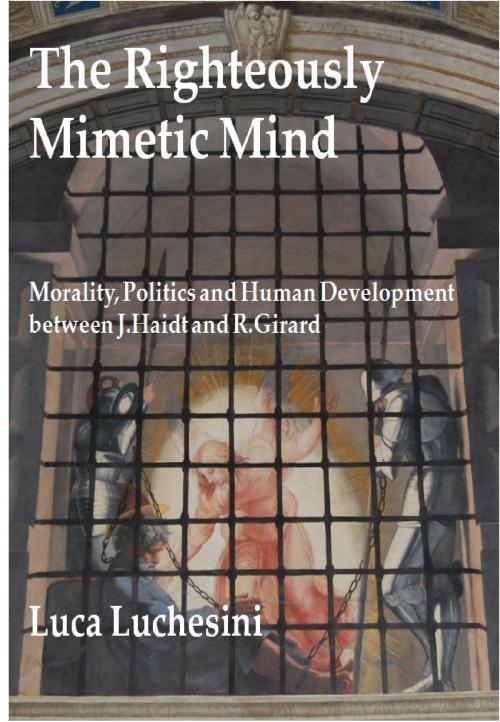The Righteously Mimetic Mind
Nonfiction, Health & Well Being, Psychology, Developmental Psychology, Social & Cultural Studies, Political Science| Author: | Luca Luchesini | ISBN: | 9781310439308 |
| Publisher: | Luca Luchesini | Publication: | June 6, 2014 |
| Imprint: | Smashwords Edition | Language: | English |
| Author: | Luca Luchesini |
| ISBN: | 9781310439308 |
| Publisher: | Luca Luchesini |
| Publication: | June 6, 2014 |
| Imprint: | Smashwords Edition |
| Language: | English |
This essay connects the dots between “The Righteous Mind”, the recent success of Jonathan Haidt about the evolutionary foundations of morality and mimetic theory developed by Rene Girard around the key concepts of imitative desire and scapegoating. The two authors come from very different backgrounds and yet they share a deep interest in researching the process that created mankind. A Catholic literary theorist turned anthropologist, Rene Girard (born 1924) published in 1973 “Violence and the Sacred” where he explained the role of imitative desire and unanimous violence against isolated victims in the birth of primitive religions, myths and rituals. Jonathan Haidt, a Jewish liberal atheist somehow traveled in the opposite direction: starting from a liberal, rational and evolutionary cultural background he discovered all along his research in developmental psychology the multi-faceted nature of human morals, and he eventually rehabilitated religion as a distinctive feature of mankind, openly disagreeing with the “New atheist” view that sees religion as a bug in the evolution process of the human species. The first two chapters provide a brief overview of Haidt thinking about the evolution and nature of morality and Girard theory of the origin of religion and culture. In the third and fourth chapters we describe the common ground as well as the challenges that the two theories pose to each other. In the fifth chapter we list some of the implication of the two theories on current political and moral thinking, as both theories provide very valuable insight into human origins and behavior. With a bit of humorous hype, the works of Haidt and Girard might prove in humanities the equivalent of general relativity and quantum theory in the physical realm, that is two explanations not fully compatible yet invaluable in understanding a large part of our world.
This essay connects the dots between “The Righteous Mind”, the recent success of Jonathan Haidt about the evolutionary foundations of morality and mimetic theory developed by Rene Girard around the key concepts of imitative desire and scapegoating. The two authors come from very different backgrounds and yet they share a deep interest in researching the process that created mankind. A Catholic literary theorist turned anthropologist, Rene Girard (born 1924) published in 1973 “Violence and the Sacred” where he explained the role of imitative desire and unanimous violence against isolated victims in the birth of primitive religions, myths and rituals. Jonathan Haidt, a Jewish liberal atheist somehow traveled in the opposite direction: starting from a liberal, rational and evolutionary cultural background he discovered all along his research in developmental psychology the multi-faceted nature of human morals, and he eventually rehabilitated religion as a distinctive feature of mankind, openly disagreeing with the “New atheist” view that sees religion as a bug in the evolution process of the human species. The first two chapters provide a brief overview of Haidt thinking about the evolution and nature of morality and Girard theory of the origin of religion and culture. In the third and fourth chapters we describe the common ground as well as the challenges that the two theories pose to each other. In the fifth chapter we list some of the implication of the two theories on current political and moral thinking, as both theories provide very valuable insight into human origins and behavior. With a bit of humorous hype, the works of Haidt and Girard might prove in humanities the equivalent of general relativity and quantum theory in the physical realm, that is two explanations not fully compatible yet invaluable in understanding a large part of our world.















